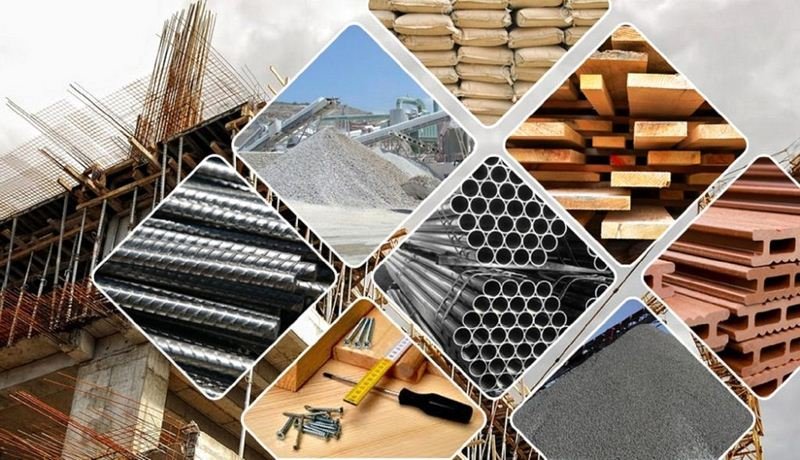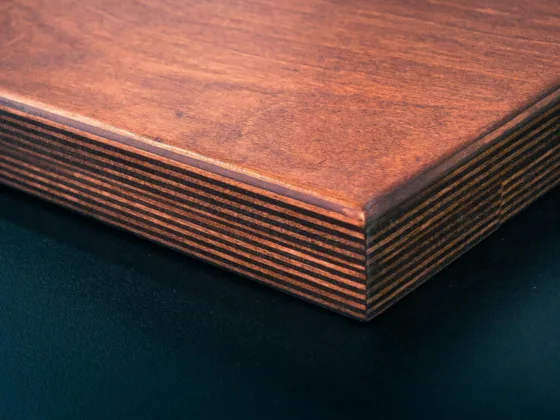Table of Contents Show
The selection of building materials is essential in any construction process. From residential homes to large commercial projects, the choice of materials can impact durability, comfort, and sustainability. Understanding these materials helps in making informed decisions for your building needs.

Lumber: The Backbone of Wood-Frame Construction
Lumber has long been a key material in building homes and structures, forming the essential framework for wood-frame construction. Its widespread use stems from its versatility, durability, and the fact that it is readily available in many regions.
As a preferred choice for builders and contractors, lumber provides the foundational support needed for various construction projects.
Types of Lumber Used in Building
When it comes to the types of lumber utilized in building, there are two main categories: softwoods and hardwoods.
Softwoods
Softwoods, such as pine, cedar, and fir, are frequently used for framing. These woods are lightweight, which makes them easy to handle and cut. Their flexibility and strength make them ideal for constructing walls, roofs, and other structural components.
Hardwoods
Hardwoods, like oak, maple, and cherry, serve other purposes in construction. Known for their toughness and attractive grain patterns, hardwoods are often used in furniture, cabinetry, and flooring. They bring a level of elegance and durability that is hard to match, providing both beauty and functionality.
Importance of Sustainable Sourcing
Sustainable sourcing has become an important consideration for the lumber industry. Buyers should look for certifications like the Forest Stewardship Council (FSC) label when purchasing wood products. This certification ensures that the lumber comes from responsibly managed forests that are environmentally friendly.
Estimating Lumber Needs for Construction Projects
Estimating the amount of lumber needed for construction projects is a crucial step in planning.
Example: Framing a House
When framing a house with an area of 1,000 square feet, builders typically calculate the number of studs required based on the spacing of the walls. A common approach is to use 2×4 lumber and assume about 12 studs are needed for every 16 feet of wall.
- Calculate Wall Segments: Divide the total square footage by the average square footage covered by each wall segment, which is approximately 98 square feet.
- Estimate Total Studs: Use the calculated wall segments to estimate the total number of studs needed.
In this example, the calculation would yield around 120 studs necessary to complete the framing of the house.
Overall, lumber remains a fundamental element in construction, offering a blend of practicality, beauty, and responsibility that resonates with both builders and homeowners.
Concrete: Strength and Durability in Construction
Concrete is widely recognized for its strong properties and lasting durability. It plays a crucial role in many construction projects, making it a go-to choice for builders. The strength of concrete allows it to bear heavy loads, while its durability ensures that structures can withstand harsh weather and wear over time.
Different Types of Concrete Mixes and Their Applications
There are several types of concrete mixes, each designed for specific uses.
- The standard mix is suitable for general construction tasks, like sidewalks and residential buildings. Its balance of strength and workability makes it versatile.
- The high-strength mix is crafted for heavy-duty applications. This type is perfect for large structures such as bridges and high-rise buildings, where safety and load-bearing capacity are critical.
- The lightweight mix finds its place in projects where reducing weight is necessary. It is often used in precast panels and structures where ease of handling is important without sacrificing too much strength.
The Role of Concrete in Foundations, Slabs, and Walls
Concrete is essential in many parts of a building.
- In the foundation, it provides stability and support, ensuring the entire structure rests solidly on the ground.
- For slabs, which are flat horizontal surfaces, concrete offers a strong base for floors.
- In walls, concrete stands out for its durability, helping to protect against weather conditions and physical impact. This makes concrete a trusted choice for both residential and commercial buildings.
Concrete Finishing Techniques and Considerations
Finishing concrete is an important step in construction. It involves techniques such as smoothing and adding texture to surfaces.
- Smoothing creates a flat, even surface, ideal for areas like floors.
- Texturing can add grip and visual interest, making surfaces more appealing.
The chosen finishing method affects both the durability and the appearance of the concrete. Different finishes can lead to varying results, so careful consideration is necessary for each project.
Steel: Strength, Versatility, and Modern Aesthetics
Steel is widely recognized for its remarkable strength and its adaptability, making it a top choice in construction. This metal can be shaped in many ways, allowing for innovative designs that meet various structural needs. Its durability stands out, ensuring buildings can last for many years without significant wear.
Advantages of Steel Framing
- Exceptional fire resistance
- Resistance to pests such as termites
These qualities make steel a safer and longer-lasting option.
Disadvantages of Steel Framing
- Higher initial cost compared to wood
- Potential for corrosion if not properly treated or maintained
When comparing steel framing to wood framing, both materials have their distinct advantages and disadvantages.
Applications of Steel in Construction
Steel plays a vital role in constructing high-rise buildings and bridges.
Due to its high strength-to-weight ratio, steel can support heavy loads without needing excessive material. This characteristic is essential for skyscrapers, which stretch high into the sky while remaining stable and safe.
Bridges also benefit from steel’s strength, allowing them to span long distances and carry heavy traffic without risk.
Sustainable Benefits of Steel
In addition to its strength and versatility, steel is an excellent choice for sustainable construction. One of its most appealing features is that it is 100% recyclable.
At the end of its life cycle, steel can be melted down and repurposed into new products. This recyclability reduces waste and helps create a circular economy in the construction industry.
Masonry: Bricks, Blocks, and Stones
Masonry refers to a range of building materials that can enhance both the look and strength of structures. It plays a vital role in construction and architecture, giving buildings their character and reliability.
Different Types of Masonry Materials and Their Properties
There are several types of masonry materials, each with unique traits that suit different projects.
1. Bricks
Bricks are a popular choice for many reasons:
- Durability: Bricks are known for their ability to withstand various weather conditions, making them a long-lasting option for construction.
- Thermal insulation: Bricks provide excellent thermal insulation, helping to keep buildings warm in winter and cool in summer. This makes them energy-efficient and comfortable for occupants.
2. Concrete Blocks
Concrete blocks are another common masonry option.
- They are versatile and can be used in many ways, from interior walls to exterior facades.
- Concrete blocks are strong and can support heavy loads, making them a good choice for foundational work.
- They are also budget-friendly, offering a great balance of quality and cost.
3. Stone
Stone is often chosen for its natural beauty.
- It provides a timeless look that many homeowners and builders appreciate.
- Stone is not only visually appealing but also incredibly durable.
- It can resist wear and tear over time, making it a wise investment for structures that need to stand the test of time.
RELATED: What to Look for in a Masonry Contractor
Applications of Masonry in Construction
Masonry can be used for various applications in construction, including:
- Walls: Masonry provides solid barriers that can protect against weather and noise.
- Facades: Facades made of masonry materials enhance the appearance of buildings, giving them unique styles and textures.
- Landscaping: Masonry is often used in outdoor spaces, contributing to pathways, retaining walls, and garden features.
Cost Considerations for Masonry Materials
When considering the cost of different masonry materials, there is a noticeable variation:
- Bricks typically cost around $6 per square foot, which reflects their quality and longevity.
- Concrete blocks are much more affordable, coming in at about $2.50 per square foot.
This difference in price makes concrete blocks an attractive option for those working with a limited budget, while bricks may be worth the investment for projects that require enhanced durability and aesthetics.
Masonry encompasses bricks, blocks, and stones. Each material offers distinct advantages, making masonry a crucial element in various construction projects. It provides structural support, aesthetic appeal, and cost-effective options that cater to a wide range of needs.
Gypsum: Drywall and Interior Finishes
Gypsum products are essential for building sturdy walls and ceilings in homes and commercial spaces. They provide a solid foundation for various interior designs and are widely used in construction due to their practicality and effectiveness.
The Role of Gypsum in Interior Walls and Ceilings
Gypsum is favored for its lightweight nature and fire-resistant properties. This quality makes it a safe choice for interior construction. In the event of a fire, gypsum can slow down the spread of flames, giving occupants more time to escape.
In addition to safety, gypsum helps create a smooth surface that is easy to finish with paint or wallpaper.
Types of Gypsum Board and Their Applications
There are different types of gypsum board available, each tailored for specific uses.
- The standard board is commonly used in most areas of a home. It is versatile and affordable, making it a go-to option for many projects.
- For spaces that require extra safety, such as stairwells or near furnaces, fire-rated board is a better choice. This type of board is designed to withstand high temperatures for a longer period.
- In moisture-prone areas like bathrooms and kitchens, moisture-resistant board works best. It prevents water damage and mold growth, keeping spaces safe and clean.
Installation Techniques and Best Practices for Drywall
Installing drywall properly is key to achieving a clean look and long-lasting results.
- Using drywall screws instead of nails helps secure the boards more effectively. This prevents the boards from loosening over time.
- Taping the seams smoothly is also important. This step creates a seamless appearance and reduces the risk of cracks appearing later.
Taking the time to follow these best practices can make a big difference in the overall quality of the installation.
Insulation: Energy Efficiency and Comfort
Insulation plays a crucial role in maintaining comfortable indoor temperatures while also helping to lower energy costs.
Types of Insulation Materials
There are several types of insulation materials available, each with its unique benefits:
- Fiberglass: One of the most common choices for homeowners. It is cost-effective and easy to install, making it a popular option. Fiberglass insulation usually comes in batts or rolls, allowing for quick installation in walls and ceilings.
- Cellulose: Another great choice, especially for those who want an eco-friendly solution. This material is made from recycled paper products and is treated for fire resistance. It provides good thermal performance and is often used in attics and walls. Its environmentally friendly nature makes it appealing for green building projects.
- Foam: Known for its ability to seal gaps effectively. It can be sprayed into areas that are hard to reach and instantly expands to fill voids. This makes foam insulation highly efficient, as it helps prevent air leaks. It can be a bit pricier but is advantageous for maximizing energy savings.
Understanding Insulation R-Values
Understanding insulation R-values is essential. R-values measure a material’s resistance to heat transfer. The higher the R-value, the better the insulation performs.
For attics, aiming for an R-value of at least R-38 is recommended. This ensures that the insulation provides adequate protection against heat loss.
Importance of Proper Insulation Installation
To maximize energy savings, proper insulation installation is critical. Air leaks can significantly diminish insulation effectiveness. Ensure that insulation covers all gaps and seams in walls and ceilings. Sealing around windows, doors, and other openings is also vital to prevent drafts.
Properly installed insulation not only improves comfort but also enhances overall energy efficiency, leading to lower utility bills. Taking the time to do it right pays off in the long run.
Roofing Materials: Protecting Your Investment
Choosing the right roofing material is crucial for ensuring your home stays protected and maintains its value over time. A well-made roof not only shields your home from the elements but also adds to its overall appeal.
1. Asphalt Shingles: The Popular Choice
Asphalt shingles are by far the most common choice for residential roofing. They are known for being budget-friendly and straightforward to install.
Many homeowners opt for asphalt shingles because they come in various styles and colors, making it easy to match a home’s design. They are lightweight and can be installed quickly, often within just a few days.
2. Metal Roofing: The Durable Option
Metal roofing is gaining popularity due to its impressive durability and long lifespan. These roofs can last up to 50 years with proper care.
Why Choose Metal Roofing?
- Weather Resistance: Metal roofs can withstand severe weather, including high winds, heavy rain, and snow.
- Low Maintenance: They require far less maintenance than traditional materials, making them a smart investment over the long haul.
- Energy Efficiency: Their reflective properties can even help reduce energy costs by keeping homes cooler in the summer.
3. Tile and Slate: The Timeless Choices
Other roofing options include tiles and slate, both of which are known for their strength and style.
- Tile Roofs: Tile roofs not only provide durability but also add a distinct look to a home, often found in Mediterranean or Spanish designs. They are excellent at resisting fire and pests.
- Slate Roofs: Slate roofs, while on the more expensive side, can last over a century. Their natural stone properties make them resistant to both fire and harsh weather conditions, appealing to those looking for a long-lasting roofing solution.
When selecting roofing materials, consider the longevity, maintenance needs, and aesthetic appeal. Each material has its unique benefits, allowing homeowners to choose what fits their priorities best.
Glass: Functionality and Aesthetics
Glass is a key material that combines beauty and purpose in modern architecture. It plays a crucial role in both the look and functionality of buildings today.
Types of Glass Used in Construction
There are several types of glass that builders commonly use. Each type has unique properties that serve different needs.
- Tempered Glass: Known for its strength, tempered glass is much tougher than regular glass and can withstand impacts better. This makes it a safer choice for places where breakage could lead to injuries.
- Laminated Glass: With additional layers that help reduce noise from outside, laminated glass is particularly useful in busy urban areas. It also enhances safety by holding together even when shattered, preventing sharp shards from falling.
- Insulated Glass: Designed to improve energy efficiency, insulated glass keeps buildings warmer in winter and cooler in summer. This contributes to lower energy bills and a more comfortable indoor climate.
Applications of Glass in Modern Construction
The applications of glass in modern construction are vast:
- Windows: The most common use of glass, windows allow natural light to fill interiors.
- Facades: Made of glass, facades create striking exteriors.
- Skylights: Adding to the aesthetic while bringing the outdoors inside, skylights are another application of glass.
Energy-Efficient Glass Options
Energy-efficient glass options, like low-emissivity (Low-E) glass, help reduce energy costs. This type of glass reflects heat while still allowing light to pass through, keeping buildings warm in colder months and cool during hot weather. The balance of visibility and energy savings makes it a popular choice among builders and homeowners alike.
Overall, glass remains an essential element in modern design, enhancing both the appearance and practicality of buildings.
Plastics: Versatility in Construction
Plastics play a crucial role in modern construction, offering a wide range of uses that enhance building processes. Their flexibility allows builders to approach projects in innovative ways, leading to more effective construction methods and applications.
PVC Pipes and Fittings in Plumbing Systems
One of the most common uses of plastics in construction is found in plumbing systems.
Why Choose PVC for Plumbing?
PVC, or polyvinyl chloride, is a popular choice for pipes and fittings because it is lightweight. This characteristic makes transportation and installation much easier compared to heavier materials.
The Advantages of PVC Pipes
Beyond being easy to handle, PVC pipes have several advantages:
- Durability: PVC pipes are durable, which means they can withstand pressure without breaking.
- Corrosion Resistance: They are also resistant to corrosion, so they do not rust or degrade over time when exposed to moisture, making them an ideal solution for plumbing needs.
Plastic Sheeting and Membranes for Waterproofing
Another important use of plastics in construction is plastic sheeting and membranes used for waterproofing. These materials play a crucial role in preventing moisture damage.
When installed correctly, they safeguard the building’s foundation and other key areas from water penetration. This barrier guarantees a more resilient structure that can endure longer and needs fewer repairs over time.
Using plastic sheeting assists builders in steering clear of expensive problems related to water damage, such as mold growth or structural deterioration.
Other Applications of Plastics in Construction
Besides plumbing and waterproofing, plastics are versatile enough to be used in various other applications within the construction sector. For example, plastic materials are commonly found in window frames and siding.
Using plastics for these features allows builders to enhance the aesthetic appeal of buildings while still providing solid performance.
- Unlike traditional materials, plastic window frames and siding are often lighter and easier to install.
- They come in numerous styles and colors, allowing for creative designs without compromising on functionality.
- This combination of beauty and strength makes plastics a valuable choice in creating attractive and lasting buildings.
Paints and Coatings: Protection and Aesthetics
Paints and coatings serve two main purposes: they enhance the visual appeal of surfaces while also providing protection. From home interiors to outdoor structures, the right paint can change the look of any space while adding a layer of defense against the elements.
Choosing the Right Paint for Different Areas
When it comes to choosing paint for different areas, there are two main types to consider:
- Latex Paint: Popular for interior use due to its ease of cleaning and quick drying time. It works well in living rooms, bedrooms, and kitchens.
- Oil-Based Paint: Ideal for exterior surfaces or high-traffic areas inside your home, like hallways or children’s playrooms. Its durability makes it a good choice when wear and tear is expected.
Importance of Selecting the Right Type of Paint
Selecting the right type of paint is crucial for achieving the best results. Different surfaces require different paint formulations. For instance, wood, metal, and drywall all have unique properties and needs. Using a paint specifically designed for the surface will ensure better adherence and longevity.
Key Steps Before Applying Paint
Before applying paint, proper preparation is key. This involves:
- Cleaning Surfaces: Remove dirt and grease that can hinder paint adhesion.
- Priming: Apply a good primer to create a smooth base, allowing the paint to adhere better and last longer.
The right preparation and application techniques lead to a professional-looking finish that endures over time.
Aggregates: Essential Components of Concrete and Asphalt
Aggregates play a crucial role in the composition of concrete and asphalt. They make up a substantial portion of these materials, significantly affecting their strength and overall durability.
When discussing aggregates, it is important to recognize the different types and their unique characteristics.
Types of Aggregates
The main categories of aggregates include:
- Sand
- Gravel
- Crushed Stone
Sand
Sand is a fine aggregate that is commonly used in concrete mixes. It helps create a smooth texture and enhances the mixture’s workability.
Gravel
Gravel is coarser than sand and is often used for drainage purposes. Its larger particles help facilitate water flow and prevent erosion.
Crushed Stone
Crushed stone is another essential type of aggregate. It provides structural support and is frequently used in road construction and foundations, adding to the stability of structures.
RELATED: The Top Five Usages for Gravel and Sand
Importance of Aggregate Quality
The quality of aggregates is vital in construction. Using high-quality aggregates strengthens the final product, which directly impacts the stability and longevity of the built environment. On the other hand, poor quality aggregates can lead to premature failure or costly repairs.
Sourcing Aggregates: Local vs Imported
When it comes to sourcing aggregates, there are two primary options: local and imported.
Advantages of Local Sourcing
Local sourcing offers several advantages, including:
- Reduced transportation costs
- Ability to support local communities and economies
- Minimization of carbon footprint associated with transporting materials over long distances
Considerations for Imported Aggregates
However, imported aggregates may provide unique characteristics or specifications that are not readily available locally. While they might offer advantages, the trade-off often includes higher shipping costs and longer delivery times.
Ultimately, understanding the types of aggregates and their importance in construction is essential for any building project. Choices made during the selection and sourcing process can have lasting effects on the quality and stability of structures.
Conclusion: Choosing the Right Materials for Your Project
Selecting the right materials is essential for the success of any construction project. The materials you choose will affect the durability, efficiency, and overall quality of the build. Taking the time to select the best options can save you money and reduce future maintenance needs.
Key Takeaways from the Guide
Every material explored in this guide has its own set of advantages. These benefits can significantly enhance the lifespan and efficiency of your structure. For instance, certain materials may provide better insulation, while others might be more resistant to weathering. Understanding these characteristics will help you make an informed choice that fits your project’s specific requirements.
Importance of Material Sustainability
Choosing sustainable materials is important for our environment. Materials that are sourced responsibly help lower the carbon footprint of your project. They also support practices that are kind to our planet and promote a healthy ecosystem. By opting for sustainable options, you contribute to a positive impact on the environment and encourage others to do the same.
Further Resources and Research
If you want to learn more about building materials, there are various resources available:
- Local building codes can provide insights into safety and compliance requirements.
- Consulting with construction professionals can offer guidance tailored to your project.
- Engaging with experts will ensure that you are making the best choices for your particular needs, leading to a successful and sustainable construction process.
FAQs
The most commonly used materials in construction include lumber, concrete, steel, masonry, gypsum, insulation, roofing materials, glass, plastics, paints and coatings, and aggregates. Each has unique properties that contribute to the durability and aesthetics of buildings.
When choosing insulation, consider the type of materials available (like fiberglass, cellulose, or foam) and their R-values, which indicate thermal resistance. Aim for at least R-38 in attics for optimal energy efficiency, and ensure proper installation to prevent air leaks.
Softwoods, like pine and cedar, are lightweight and ideal for framing, while hardwoods, such as oak and maple, offer durability and are often used for furniture and flooring. Each type has its own applications based on strength, aesthetics, and workability.
Concrete is known for its robust properties and durability, making it ideal for foundations, slabs, and walls. It can be mixed in various strengths for different applications, ensuring stability and support for structures.
Steel is celebrated for its strength, fire resistance, and versatility. It has a high strength-to-weight ratio, making it perfect for high-rise buildings and bridges. Additionally, steel is 100% recyclable, promoting sustainability in construction.
To estimate lumber needs, calculate the area to be framed. For example, if framing a 1000 sq. ft. house with 2×4 lumber, you would generally require about 120 studs based on standard spacing. It’s important to plan accurately to avoid material shortages.










